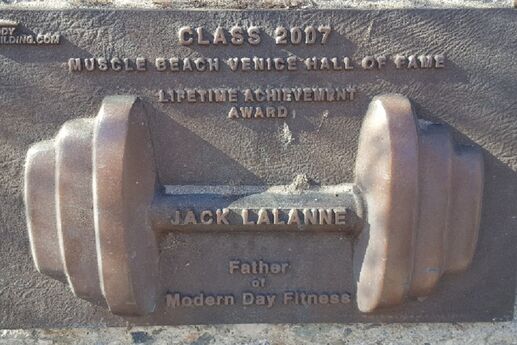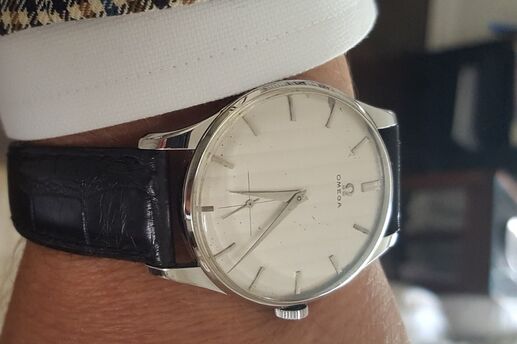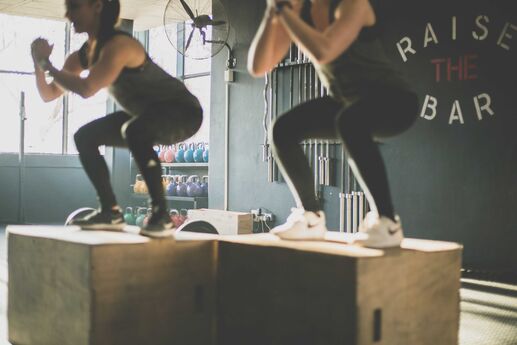Go From Stick to Thick
It's tough to bulk up. But even “hard gainers” can add muscle if they follow these crucial tips.
Some guys put on muscle just by Googling. A lot of men, though, aren’t so lucky. They're “hard gainers,” for whom nothing comes “in bulk.”
But even the skinniest guys can put on some halfway-respectable mass if they work it right. Hey, if you’ve seen Christian Bale’s skeletal stick figure in The Machinist, you’d never guess he could become the buffed Dark Knight. So, if you’d like to go from machinist to Batman, follow these quick, effective tips on how to put on the right kind of weight (muscle, not fat). True, you may not wind up as muscular as the Caped Crusader (genetics can be quite the super-villain), but surely you can look as good as Robin. Here’s how:
Leave the Bodybuilding Routines for the Bodybuilders
You’ve got the latest issue of Muscle Maniacs Magazine in your hand, and you’re tempted to try that chest workout Mr. Galaxy is using. Stop.
“Those magazines are based on steroid bodybuilders, and what works for somebody on steroids doesn’t work for somebody who wants to be natural,” says Fit Chicago owner Clint Phillips, a certified personal trainer. “Many hard gainers think more is better and end up doing an insane amount of sets and reps. They’ll often be in the gym for two or three hours.”
Instead, Phillips recommends spending only 45 minutes to an hour with the weights and no more than two to three weight workouts a week.
To Get Bigger, Go Basic
Get rid of the so-called “shaping exercises” done with little dumbbells -- such as shoulder raises, chest flyes and concentration curls -- as these target only part of a muscle group. Instead, stick with barbell-type moves and heavier weights, and aim for compound movements that involve at least two or more muscle groups, such as the chest, shoulders and triceps for the bench press.
Why? Your muscles respond most to lifting heavier loads, and the impact on the muscles can be considerably magnified by moves that involve more muscle groups. This will enable you to lift even heavier weights and build more muscle thanks to those bigger loads.
“Choose the more difficult movements,” advises certified personal trainer Mike Boyle, who owns Mike Boyle's Strength & Conditioning in Winchester, Mass. Go for the bigger exercises like squats, presses, deadlifts, chin-ups and straight bar curls.
Challenge Yourself
To maximize your gains, choose challenging moves and go hard during every set. “Intensity is much more important to muscle growth than quantity. I would much prefer to see two very intense sets to failure [until you can’t lift anymore] with heavy weights and with forced reps [four to eight] than four to five sets of 12 to 15 reps at moderate intensity,” explains Phillips. For example, if you get to 10 reps with a lot of muscle straining, then you're going too light. Pound up!
Boyle agrees, saying he sees too many guys take the easy route in the weight room. “Many would rather do tricep press-downs than dips, or leg presses than squats … but they’re just cheating themselves of better muscle gains,” he explains.
Choose “Muscle Cardio”
The last thing you need -- after putting your muscles on the get-bigger track -- is going through a long cardio session, which will only whittle down those gains. Inevitably, your body will extract the energy it needs for long cardio from your muscle tissues, no matter how fueled up you are before.
Instead, further enhance the muscle-building process by adding some “muscle cardio” or “explosive cardio” -- short bursts of power followed by longer bouts of rest -- two to three times a week. Do eight rounds of 10 to 20 seconds of high-intensity cardio, such as wind sprints or cycle sprints, followed by 20 to 40 seconds rest.
Master Before-and-after Eating
There’s no shortcut to the muscled-up “after” picture of a stick-figure “before” you. Frankly, a lot of it has to do with what you routinely eat -- including different kinds of carbohydrates and proteins -- before and after workouts, and before and after sleep.
After you wake up, you want to get your muscles back into the anabolic (muscle building) state and out of the catabolic (muscle breakdown) state they fall into by morning time. Susan Kleiner, Ph.D., a registered dietitian and author of Power Eating, recommends eating protein for breakfast to avoid that latter state -- and that’s why eggs are a good start to the day. If you prefer to sip rather than chew early in the day, go with a whey protein shake -- which your muscles rapidly absorb -- with fruit.
Overall, she says that each day hard gainers must consume at least 0.73 grams of protein per pound of body weight and 2.73 or more grams of carbohydrates. In other words, if you're 180 pounds -- and don’t worry, you’ll get there -- that means 131.4 grams of protein and 491.4 grams of carbohydrates per day. If you have five meals per day, that translates to 26.3 grams of protein (equivalent to about four eggs) and 98.3 grams of carbohydrates (about five pancakes) per meal. A four-ounce chicken sandwich with a side of brown rice and vegetables would be a perfectly balanced meal.
Two to three hours before the workout, down a carbohydrate-protein mixture, such as a mixed-nutrient sports bar or a PB&J. Kleiner says it will provide immediate energy and decrease the negative effects of exercise, such as damage to muscle tissue and muscle soreness.
After your workout, don’t waste any time. “Within 15 to 30 minutes after setting down that last weight, take in some carbohydrates to refill your glycogen stores, build new proteins and refuel for tomorrow’s training session,” urges Kleiner.
Lastly, before bed, switch out the fast-digesting whey protein for slow-digesting, time-release proteins like casein protein powder and dairy food. Says Kleiner, this will help keep your body in muscle-building state during the dark night.
Or is that, “dark knight?”





